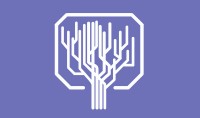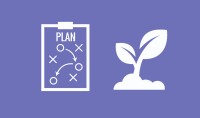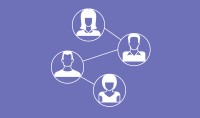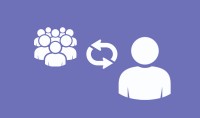Cooperative Games
Cooperative games involve a very different set of dynamics from those of competitive games and likewise require a different set of capabilities from the agents involved
In game theory, a cooperative game is any situation of interdependence between agents wherein there is the possibility for cooperative structures to be formed, either through peer communications, a third party or some other social or cultural institution. Cooperative game theory is interested in such questions as; when does a group form a coalition or what members form a coalition? How do the divide out the payoff of that overall organization to the members in a way that is considered fair, and how and when do subgroups form?1
It is important to recognize that the dynamics of cooperation are very different from those within games of non-cooperation. Cooperative dynamics rewrite the rules of the games people play. In noncooperative games like the prisoner’s dilemma, one can note how individual rationality, in fact, leads to collective irrationality.2 We can call this a dilemma and lament the fact that within the non-cooperative framework of self-interested individuals there is nothing much that can be done about it. However, we as humans do not just look out for our own interests but also those of others and in so doing we have evolved highly sophisticated means for cooperation in the process.
When one looks at the interactions between agents in the world around us one sees elements of both competition and cooperation. We see the organelles within a biological cell work together to enable its overall functioning. We see organisms within ecosystems forming symbiotic cooperative relations. We see people form families, tribes, cities and nations all of which involve high levels of cooperation. When we add this new element to the game, that of cooperation, we now have the possibility for the agents to solve the dilemma. The question then turns to how and when do coalitions for cooperation form where we can achieve both stable and optimal outcomes for the individual and the whole organization.
With noncooperative games, we are solely focused on the payoffs to the individuals and searching for stable situations. Cooperative game theory, however, adds an extra dimension to this in that we now have to think about the payoff to the whole organization. In such a case we can not simply look a the actions of the individuals and their payoffs but we have to also look at the positive or negative externalities that these actions may have on the whole system.
Cooperative Dynamics
Cooperation is a process by which the components of a system work together to achieve the global properties.3 In other words, individual components that appear independent work together to create a complex whole, greater-than-the-sum-of-its-parts system. Virtually all of human civilization is a product of our capacity to work cooperatively. Indeed the complex systems that surround us, like our global economy and technologies like a jumbo jet are a testament to our extraordinary capacity for cooperation.
In most animal groups and even our closest relatives in the primate group, competition is the norm, and cooperation occurs largely only among kin, who have common genes and so have a biological incentive to do so, or else among a few individuals who cooperate reciprocally. But humans cooperate with each other in very large groups in a multiplicity of ways. People risk their lives in war for their countrymen and we make sure that our less fortunate compatriots have enough food and medical care to survive. On a daily basis, we obey all kinds of prosocial norms. And when we do breach some prosocial norm, like not doing our part in a collective enterprise, we feel guilty or ashamed, in general, we are highly sensitive to cooperative behavior.4
Human evolved capacity for cooperation is a cultural one that distinguishes us from other creatures who we may share up to 98% of our genes in common with. A large-scale study has recently provided some foundation to this hypothesis.5 Researchers compared two-year-old children to their nearest primate relative chimpanzees and orangutans. They were all given 16 different tasks grouped into two overall categories. One concerning an understanding of the physical world, the other an understanding of the social world. The physical tests were related to space, quantity, and causality, and the social tests concerned capacities for social imitation, communication, and intention reading.
The experiment revealed that the children were not across the board more intelligent than the primate animals, but in fact only with respect to social cognition were they more advanced. At just two years of age, the children were already about twice as high on this indicator as the other two creatures. This social capacity enables us to take advantage of the skills and knowledge of others within a social group through cooperation.
Social Cognition
After many decades of the rational individual maximizing agent taking a dominant role in the social sciences new research is exploring a more non-rational and cooperative model to human behavior.
This researcher also noted that apes did have social cognitive skills, but they were mainly using their social understanding of others within contexts of competition. From this, the researchers proposed that on top of great apes skills for social cognition humans had evolved additional social cognitive capabilities for dynamics of cooperation, which involve greater complexity, but which can ultimately be seen as the foundations to advanced forms of civilization. Thus they came to understand others as not just intentional goal seeking agents, but also as potential cooperative agents with whom they could work together to produce outcomes that neither could produce alone. This cognitive capacity along with communications enabled us to create the ever more complex social and cultural institutions for cooperation, that today form the foundation of our advanced systems of socioeconomic coordination.6
The researchers claimed that this distinction between apes and humans can be identified even in the earliest human economies. Noting how apes are individual foragers, where they will travel in small groups until they find a food source like a fig tree and then run up and grab the food separately without collaboratively producing it or sharing it. Humans, however, are collaborative foragers meaning that most traditional forager groups derive most of their daily nutrition from collaborative activities in different forms, such as hunting.
This is not to say that advanced forms of cooperation do not happen within other creatures, we just have to look at ant or bee colonies to see sophisticated coordination. However, these creatures have nowhere near the kind of individual cognitive capacity that apes and humans do, and thus we do not get the same kind of complex dynamic between the individual and the group that is at the heart of human social systems. Dynamics of cooperation require more cognitive capabilities on the behalf of the individual because they are greatly more complex in nature than noncooperative situations. Whereas noncooperative dynamics are governed solely by the self-interest of the individual’s, cooperation involves a new level of organization, that of the group, and a complex dynamic between the individual and the overall group.
Social Dilemma
This central dynamic within cooperation is captured in the idea of the social dilemma. Social dilemmas are characterized by two properties: The social payoff to each individual for defecting behavior is higher than the payoff for cooperative behavior, regardless of what the other society members do, yet all individuals in the society receive a lower payoff if all defect than if all cooperate. It is a situation where individual rational behavior leads to a situation where everyone is worse off.7
Social dilemmas are of interest to many because they reveal the core tension between the individual and the group that is engendered in situations of cooperation. At their core, social dilemmas are situations in which self-interest is at odds with collective interests and they can be found in many situations of interdependence. From resource management to relationship development, to international politics, public goods provision and business management.
1. (2017). Uib.cat. Retrieved 13 May 2017, from https://goo.gl/uuXX0G 2. (2017). Staff.city.ac.uk. Retrieved 13 May 2017, from http://www.staff.city.ac.uk/andy.denis/research/denis_phd.pdf 3. (2017). Cooperatively.askdefine.com. Retrieved 13 May 2017, from https://cooperatively.askdefine.com/ 4. (2017). Umass.edu. Retrieved 13 May 2017, from www.umass.edu/preferen/gintis/prosoc.pdf 5. (2017). Science.sciencemag.org. Retrieved 13 May 2017, from https://goo.gl/xCq7dy 6. Michael Tomasello - Annual Reviews conversation “a lecture in psycholgy” (2012). (2017). YouTube. Retrieved 13 May 2017, from https://www.youtube.com/watch?v=pHTaetEUnwQ 7. (2017). Cmu.edu. Retrieved 13 May 2017, from https://www.cmu.edu/dietrich/sds/docs/dawes/social-dilemmas.pdf







